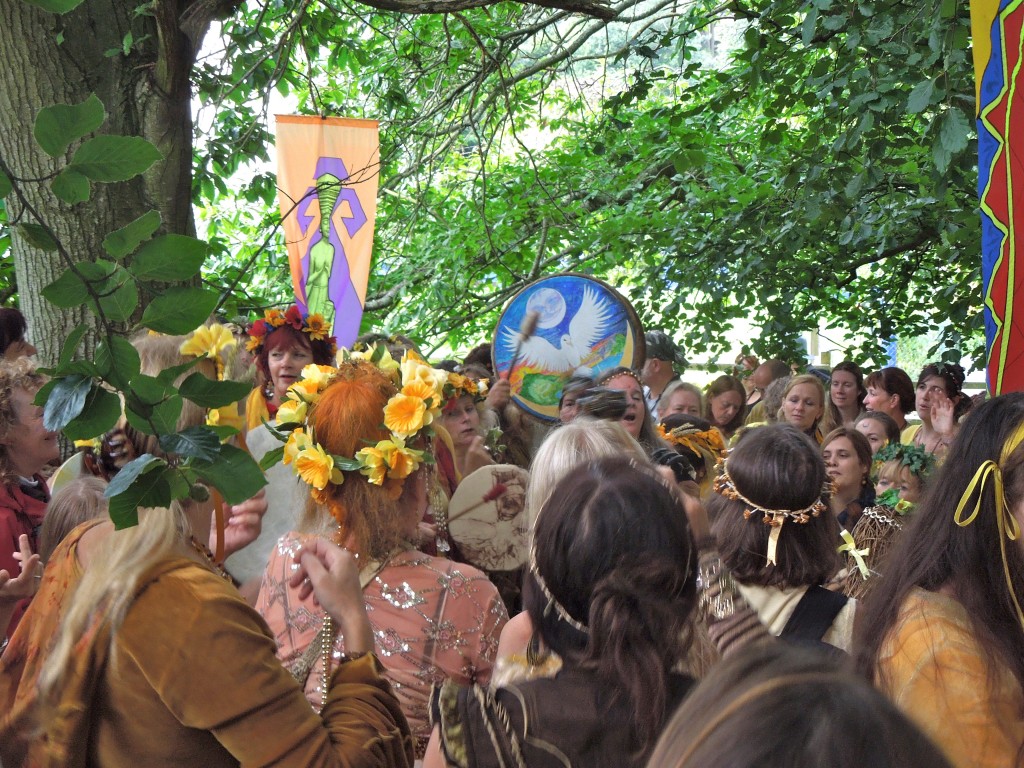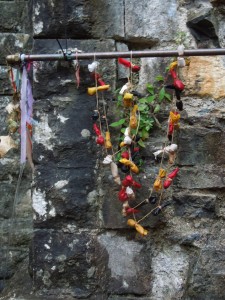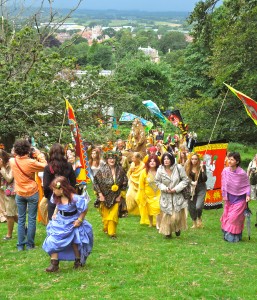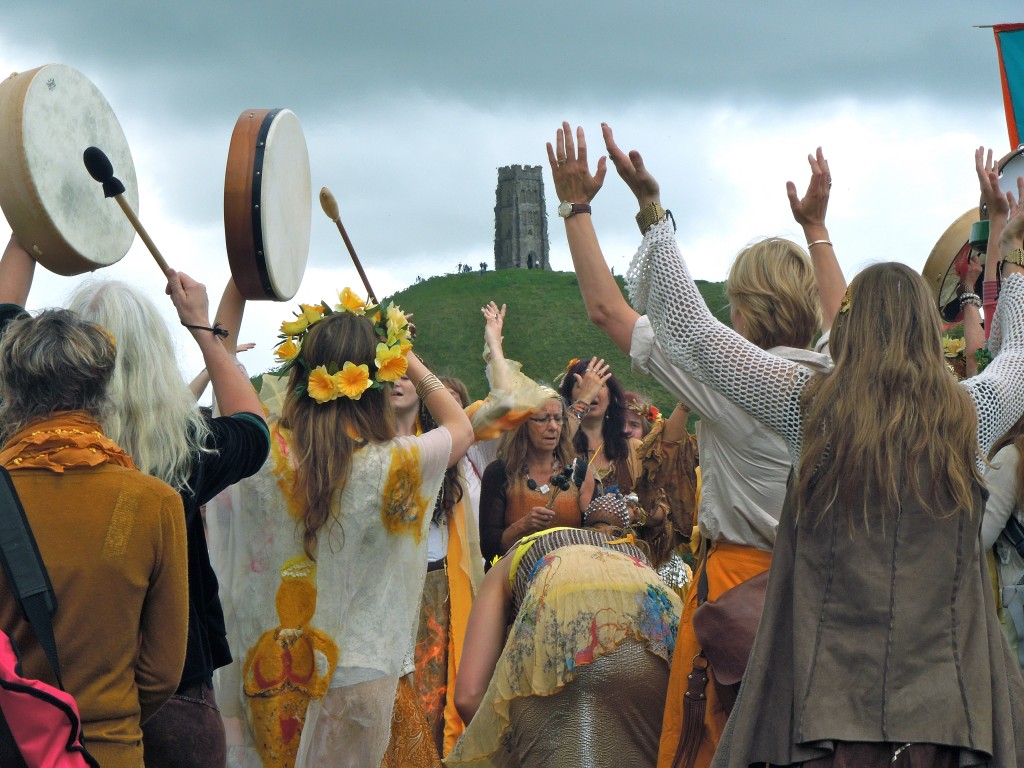
Glastonbury's Goddess Festival gathers in a grove
Ties and knots
On my final day in Glastonbury, the annual Goddess Festival took place to coincide with ancient Lammas. It allows me to tie up some loose ends, beginning, suitably enough, with knots. It’s said that ties in the most literal sense played a large part in early religion, expressive of ties to the land and the gods that ruled it.

Pagan charms at Glastonbury's White Spring
There’s a great Open University youtube interview with of a hedge witch, which shows her collecting plants for her spell casting. It shows too how she ‘seals’ her intention into the charm with a ritual knot. You can find charms like this around Glastonbury at copse and sacred spring. They’re reminiscent of the amulets at Shinto shrines.
Ancient man had a a strong awareness of ties to the land, and these were celebrated in their festivals. The Goddess Festival has been inaugurated to re-create that awareness of being bound to the Earth. Gratitude is given to the many manifestations of the Goddess down the ages.
At the 2012 festival participants gathered at the foot of a hill, to be accompanied by drumming and chanting across some fields to a hilltop in sight of Glastonbury Tor. There the group gathered around a bonfire, and beneath sporadic showers thanks were given for the gifts of greenery, abundance and fertility. ‘The earth is our Mother, we give thanks to her, the earth is our mother,..’ ran the insistent chant.
Informality and spontaneity characterised the proceedings, with themed clothing, rhythmic drumming and choreographed ritual providing coherence. The open setting, broad horizons and heavy bursts of rain provided a strong connection to nature. With the Tor in the background, the spirit of place was manifest.

Heading higher up the hill
Matsuri
The Goddess Festival is an outgrowth of the search for authenticity that drove the 1960s. In the revolt against the numbing conformity of a consumer society lay a desire for transcendence that looked to eastern religions and to the past.
There’s something of the wild abandon of neo-paganism in Japan’s traditional matsuri (festivals). You have the feeling that here lies the real roots of the religion. Some of the festivals are all too stately, but some are so frenetic they have been shut down and controlled by the authorities. Fertility festivals, ‘naked man’ festivals, rampant crowds…. there’s an almost shamanic frenzy in the religious ecstasy.
The intoxicant of choice is the divine miki (saké), and participants are often stirred up into an intoxicated mania. It’s said that festivals are intended to build collaboration among the community and to solidify ties to the local deity. Many of them clearly do. But there are other festivals where the wildness speaks of a desire to transcend physical limitations in the manner of trance dance and neo-shamanic gatherings, as if seeking to pass into a realm beyond the ego.
In the celebration of life, whether east or west, all are united in the miracle of existence.

All hail to the elements in front of Glastonbury Tor
*************************************************************************
There are several youtube videos of the Glastonbury Goddess Festival from previous years. There are also several youtube videos of Japanese matsuri, including this one which gives an indication of the frenzy of a ‘naked man’ festival: http://www.youtube.com/watch?v=8Q3DufVsktc

Leave a Reply